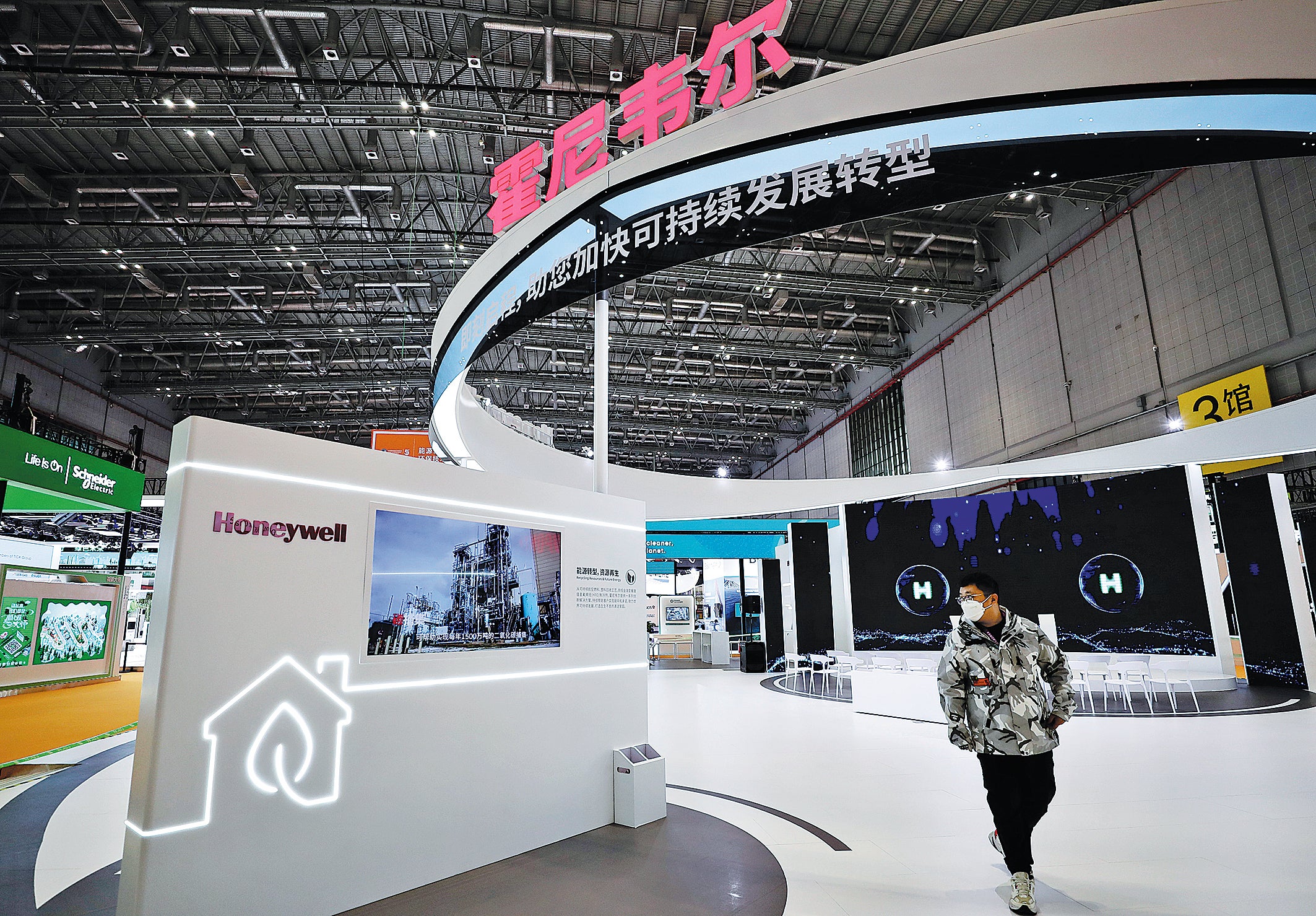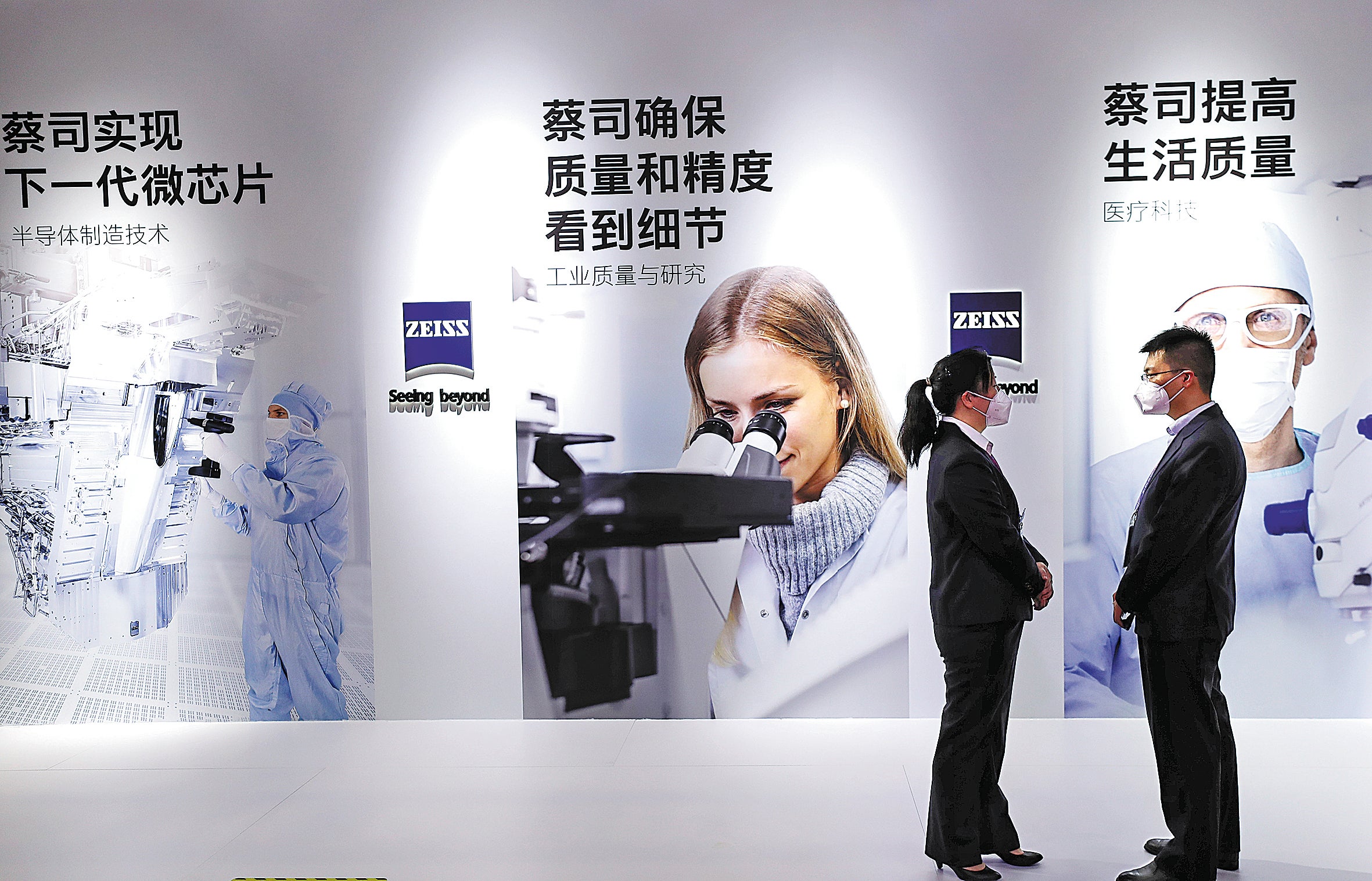Multinationals find launch pad for new products at expo
THE ARTICLES ON THESE PAGES ARE PRODUCED BY CHINA DAILY, WHICH TAKES SOLE RESPONSIBILITY FOR THE CONTENTS

A rising number of multinational corporations launched their newly developed products and innovative solutions at the China International Import Expo, the fifth edition of which was held from November 5-10, 2022, in Shanghai.
The trend, experts said, demonstrates the growing confidence of such companies that the expo has evolved over the years into a global platform for foreign trade. It also shows the high expectation of multinationals in the larger Chinese market benefiting from the spillover effect.
“As the world’s first national-level exhibition for imports, the CIIE is a good reflection of China’s dual-circulation development model, which is designed to promote internal consumption while opening the domestic market to external trade,” said Kentaro Fujiwara, chief executive to the China branch of the Japanese cosmetics firm Shiseido.
“The expo has provided a window for Shiseido to showcase its own innovation and achievements to the world. It is also a platform through which we can deepen our involvement in the China market, fully demonstrate our strengths in beauty and innovation, and continue to bring new products and technology to both Chinese and global consumers.”

At this year’s expo Shiseido displayed more than 40 new products from 22 popular brands. A series of brands, including the skincare brand Urara, made their debut.
“Against the backdrop of the pandemic, the success of the expo demonstrates China’s commitment to opening its markets wider and promoting global economic growth,” Fujiwara said.
More than 1,500 new products, technologies and services had made their debut at the expo in the previous four years, organisers said.
Industry experts said COVID-related uncertainties and impeded globalisation will affect the growth prospects of emerging markets, but the great potential of the Chinese market will drive the growth of leading foreign companies.
Hou Yang, chairman and chief executive of Microsoft Greater China, said his company has attended every CIIE, and this one coincides with the 30th anniversary of the company’s arrival in China. The expo has evolved into a good platform to share ideas, connect with customers and partners and share innovations not only from Microsoft but also its customers and partners, Yang said.
“This year … we showcased solutions built on Microsoft technologies – both by local partners seeking to have a greater global impact and international partners seeking opportunities in China.”
The company’s booth highlighted innovation around sustainability, industry transformation and healthcare aimed at empowering efficiency, resilience and better outcomes, he said.
Frank Meng, chairman of Qualcomm China, said that after more than four years of development, the CIIE had turned exhibits into commodities and exhibitors into investors. This has been the first-hand experience of Qualcomm’s participation at the expo.
“This year our participation has once again shown our confidence in the long-term sustainability of the Chinese market and the determination to work with Chinese partners to develop domestic and international markets and drive win-win development in the era of everything being intelligently connected.”
The constant changes in the company’s exhibits over the previous four years, he said, had shown that 5G is empowering various industries, and Qualcomm has a growing number of partners in China. The scope of collaboration has continued to expand as well.
Zhang Yansheng, chief researcher at the China Centre for International Economic Exchanges, said: “The fact that the CIIE is organised every year demonstrates that China honours its commitment to high-level opening-up and is sharing its development dividends with others to shore up globalisation.
“The world is in urgent need of more trade orders and increased demand to revive the staggering economic recovery, as well as communication to reach consensus and repair global industrial and supply chains.”
